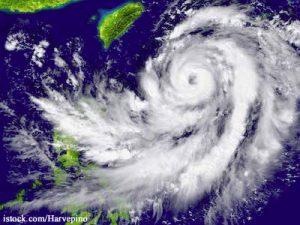It’s Hurricane Preparedness Week, do you know where your cooler is? Knowing some basic food safety rules during a hurricane or other weather emergency can prevent a bad situation from becoming even worse. The U.S. Food and Drug Administration (FDA) has prepared some food safety tips to help consumers through what could be a busy storm season.
 The National Weather Service’s Climate Prediction Center estimates that during the 2013 Atlantic hurricane season there will be 13-20 named storms, 7-11 hurricanes and 3-6 major hurricanes. And during the 2013 Pacific hurricane season there will be 11-16 named storms, 5-8 hurricanes and 1-4 major hurricanes.
The National Weather Service’s Climate Prediction Center estimates that during the 2013 Atlantic hurricane season there will be 13-20 named storms, 7-11 hurricanes and 3-6 major hurricanes. And during the 2013 Pacific hurricane season there will be 11-16 named storms, 5-8 hurricanes and 1-4 major hurricanes.
There are several things consumers should do right now, so they have some things covered when a storm approaches. First, buy bottled water and canned goods and store them where flood waters won’t reach them. Locate or purchase coolers. Find out where you can purchase dry ice. Put an appliance thermometer in your fridge and one in your freezer. Your fridge should be at 4o˚ For lower and your freezer should be at 0˚F or lower.
With doors closed food in a powerless fridge can last up to four hours, food in a powerless full freezer can keep up to 48 hours. Grouping food together in the freezer helps it stay cold longer. When the power comes back on, check the temperatures, food in the freezer that is less than 40˚ F can safely be refrozen, according to the FDA.
When you know a storm is coming, freeze containers of water, leftovers, milk, and fresh meat and poultry that you may not need immediately. This helps keep them at a safe temperature longer. Buy gas. Gather supplies that you will need to prepare emergency foods such as a can opener, a pan to boil water, utensils and soap to wash your dishes and hands. Keep them near your emergency food and water on a high shelf that floodwaters are not likely to reach.
And remember, when in doubt, throw it out. No savings in your grocery bill can equal the cost, both physical and economic, of food poisoning.




